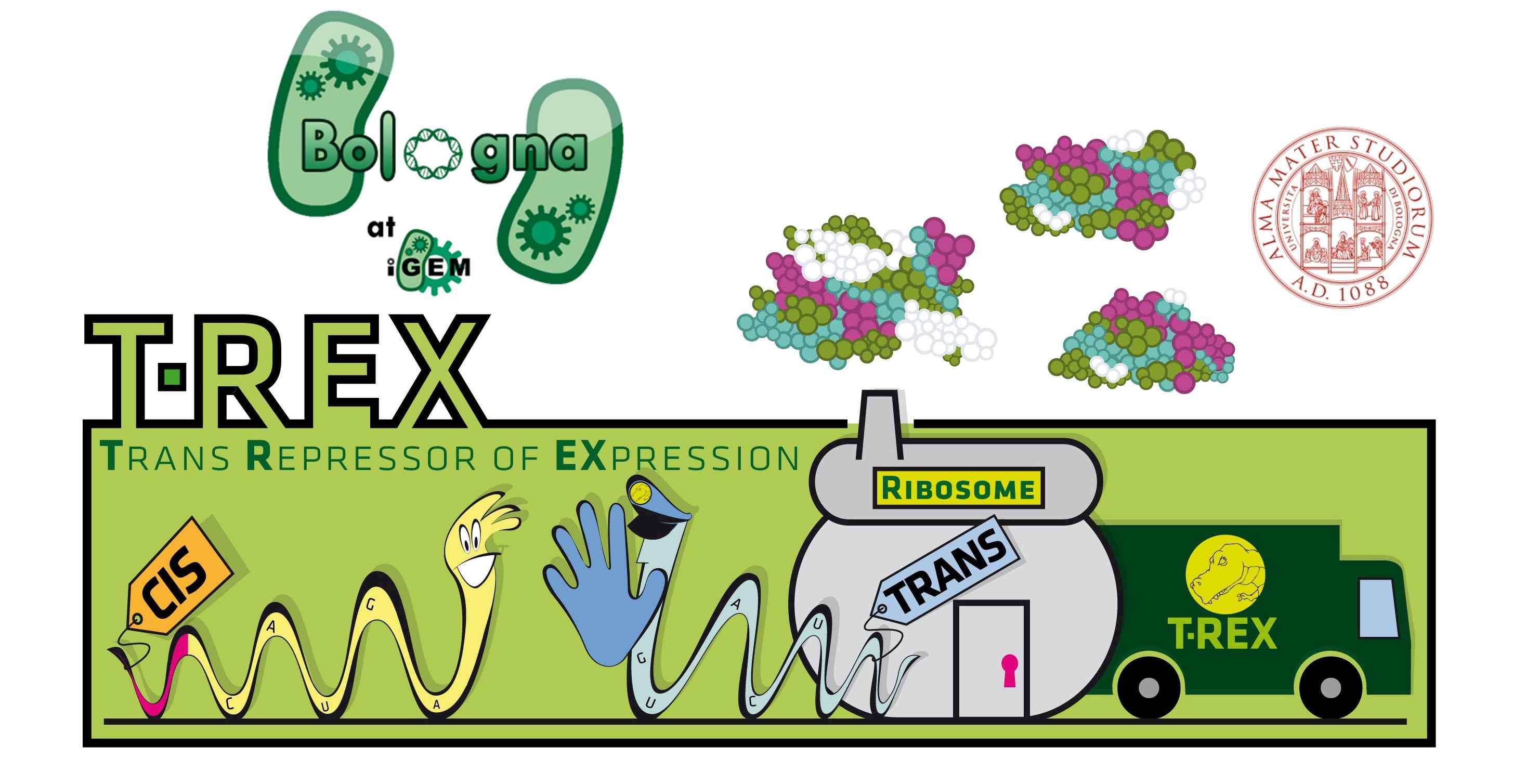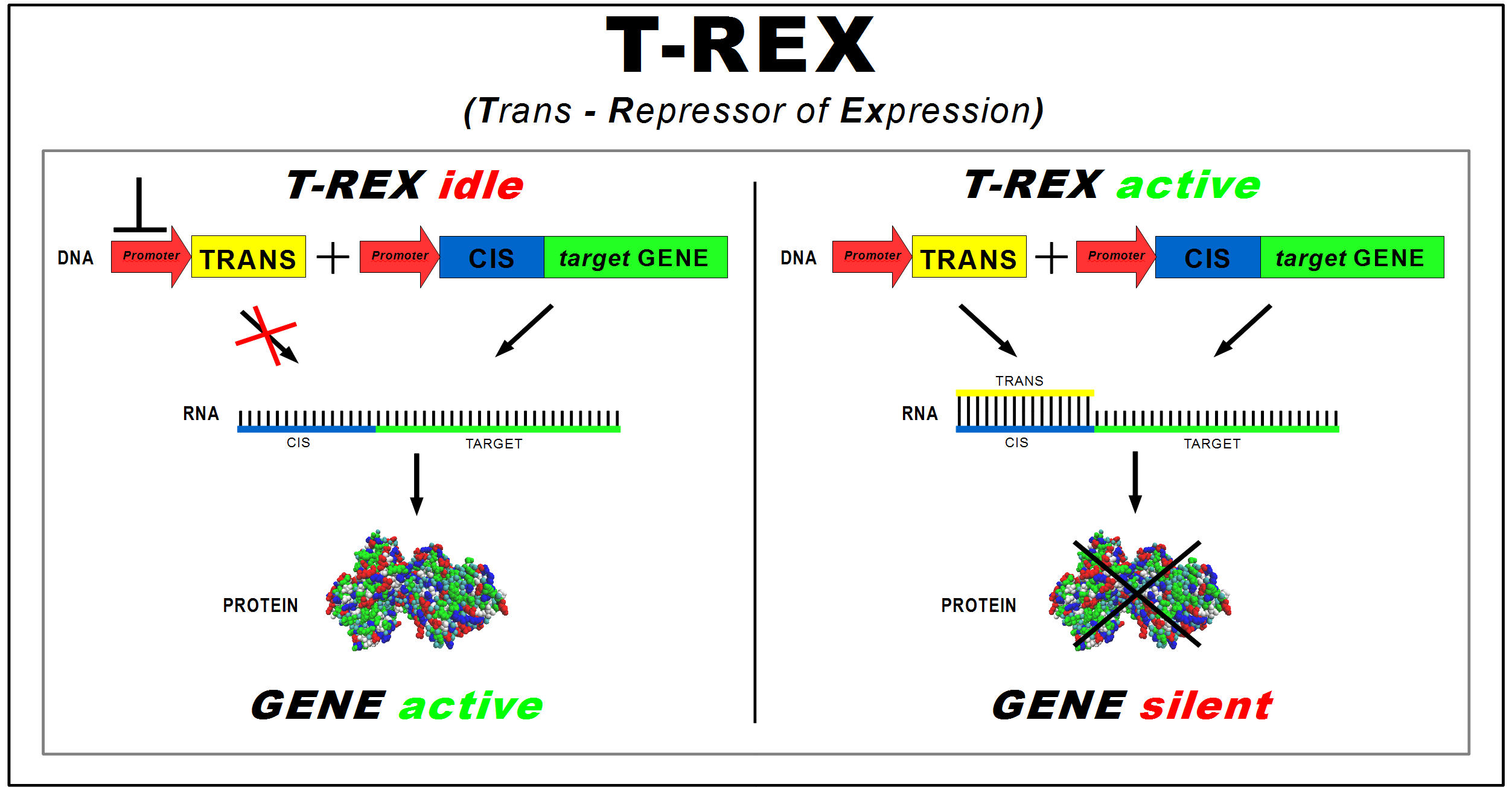Team:Bologna
From 2009.igem.org
| Line 36: | Line 36: | ||
</ul></html> | </ul></html> | ||
<br> | <br> | ||
| - | CIS-repressing and TRANS-repressor sequences were | + | CIS-repressing and TRANS-repressor sequences were designed by [[Team:Bologna/Software#1|BASER]] software. |
<br><br> | <br><br> | ||
Transcription of the target gene produces a mRNA strand, starting with the Cis element, which is translated into proteins by ribosome (<i>see Fig. 1, right panel</i>). Trans’ promoter induction produces a transcript that binds with the Cis part. The <b>RNA duplex</b> prevents ribosome from binding to RBS, <b>repressing protein synthesis</b>. Thus, the TRANS-repressor amount regulates the gene mRNA translation rate (<i>see Fig. 1, left panel</i>) | Transcription of the target gene produces a mRNA strand, starting with the Cis element, which is translated into proteins by ribosome (<i>see Fig. 1, right panel</i>). Trans’ promoter induction produces a transcript that binds with the Cis part. The <b>RNA duplex</b> prevents ribosome from binding to RBS, <b>repressing protein synthesis</b>. Thus, the TRANS-repressor amount regulates the gene mRNA translation rate (<i>see Fig. 1, left panel</i>) | ||
Revision as of 20:12, 21 October 2009
| HOME | TEAM | PROJECT | SOFTWARE | MODELING | WET LAB | PARTS | HUMAN PRACTICE | JUDGING CRITERIA |
|---|
Project Summary
Our idea
The aim of our project is the design of a new device to control the synthesis of any protein of interest. This "general-purpose" standard device, implemented in E. coli, acts at the translational level to allow a switch in protein expression faster than transcriptional promoter regulation. We named this device T-Rex (Trans Repressor of Expression).
How T-Rex works
The device consists of two new BioBricks:
CIS-repressing and TRANS-repressor sequences were designed by BASER software.
Transcription of the target gene produces a mRNA strand, starting with the Cis element, which is translated into proteins by ribosome (see Fig. 1, right panel). Trans’ promoter induction produces a transcript that binds with the Cis part. The RNA duplex prevents ribosome from binding to RBS, repressing protein synthesis. Thus, the TRANS-repressor amount regulates the gene mRNA translation rate (see Fig. 1, left panel)
How we can test the device
In order to test and characterize our T-REX device, we developed the following genetic circuit (Fig 2):
More details about our work are reported in the Project section.
Acknowledgements
- [http://www.unibo.it/Portale/default.htm University of Bologna]
- [http://serinar.criad.unibo.it Ser.In.Ar. Cesena]
- Cultural Association San Sebastiano
 "
"






